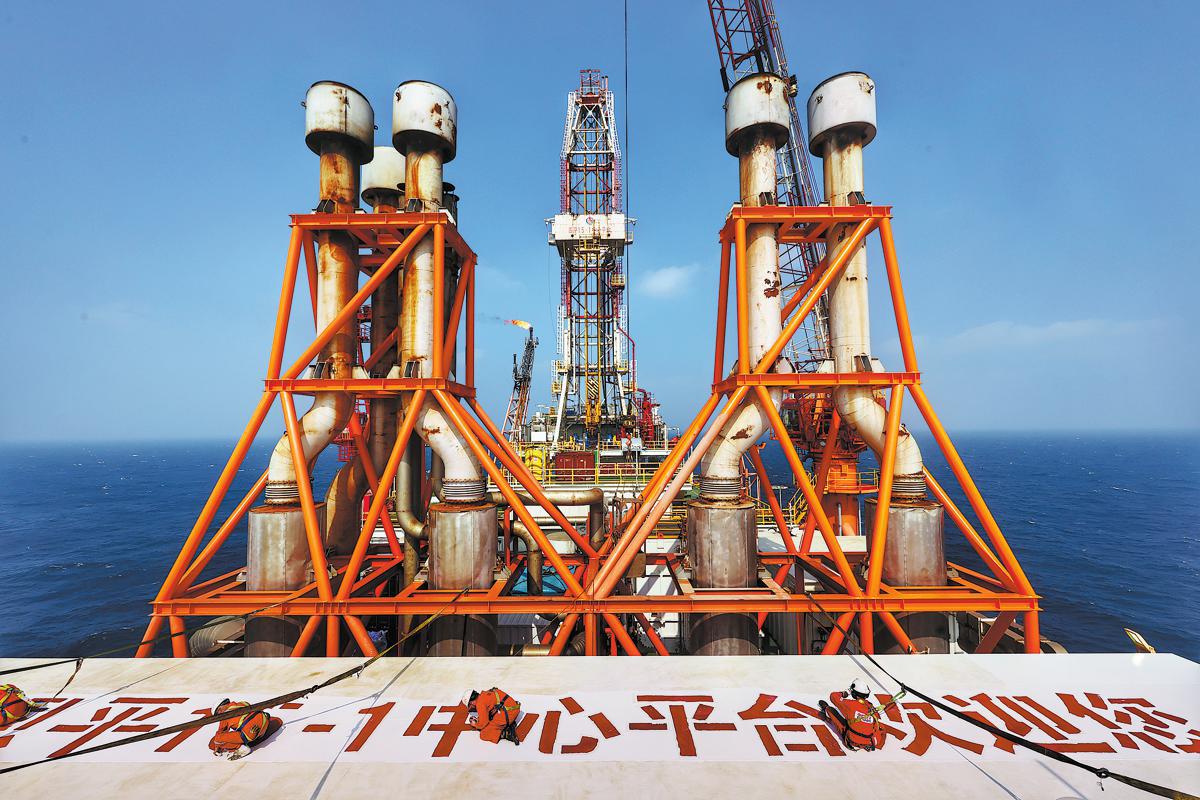Deep-sea vault built to capture CO2
Carbon storage project beneath South China Sea set to secure millions of tons of greenhouse gas

Editor's note: In this series, Greener Visions, China Daily delves into the research, development and implementation of cutting-edge carbon technologies in the Guangdong-Hong Kong-Macao Greater Bay Area, aiming to cut emissions and achieve carbon neutrality.

In a breakthrough to keep carbon dioxide permanently locked away, China has built a secure "prison" for the greenhouse gas deep beneath the South China Sea.
Located about 200 kilometers southwest of Shenzhen, Guangdong province, the Enping 15-1 oil platform hosts the nation's first megaton-sized offshore Carbon Capture, Utilization and Storage (CCUS) project. The platform, Asia's largest offshore oilfield, is operated by China National Offshore Oil Corporation (CNOOC).
The facility is designed to capture, secure and store 1.5 million metric tons of carbon dioxide annually — equivalent to planting 14 million trees or taking 1 million cars off the road for 30 years. Since its launch in June 2023, it has already injected and stored 180,000 tons of carbon dioxide beneath the seabed, marking a major step in China's fight against climate change.
The Enping 15-1 oil reservoir was selected for China's offshore CCUS demonstration project due to its unusually high CO2 content — a trait that once made extraction unviable. Traditionally, tapping such reserves would release carbon dioxide in the reservoir into the atmosphere, risking corrosion of platforms and pipelines while polluting the environment.
Recent advances in CCUS technology, however, have turned this challenge into an opportunity. The project now uses "CO2 flooding", a circular process where the capture system traps the carbon dioxide that emerges from extraction, and injects it for further oil extraction and permanent sequestration.
The method is a well-established CCUS technique used in oil drilling to enhance oil recovery. In this process, CO2 captured from industrial activities is transported via tanker trucks or pipelines and injected into oil reservoirs. The gas increases pressure, displacing scattered crude oil and boosting extraction rates, explained Xie Mingying, chief reservoir engineer at the Nanhai East Petroleum Research Institute at CNOOC's Shenzhen branch.
The Enping 15-1 oil platform announced it would begin CO2 flooding in May. Previously, captured CO2 had only been stored in a geological "dome" — a seabed structure 800 meters deep and located 3 kilometers from the platform.
Traditional oil recovery methods typically extract just 18 to 20 percent of a reservoir's crude oil.
However, CO2 flooding can increase recovery rates by 7 to 15 percent and extend the reservoir's life span by 15 to 20 years, according to Tang Yong, a professor at Southwest Petroleum University's Petroleum Engineering School.
While onshore CCUS projects have a longer operational history due to land-based logistic advantages, offshore CCUS initiatives remain relatively new, said Xie from the research institute.























